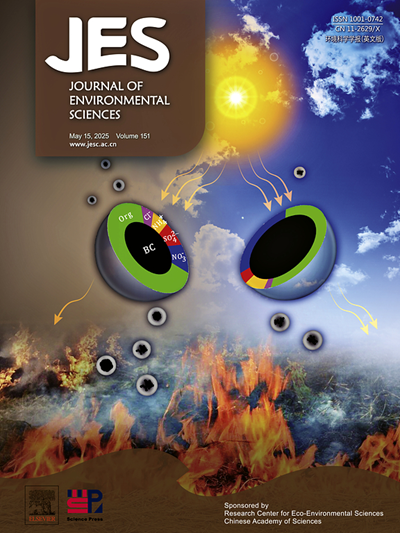食用色素Auramine O诱导斑马鱼认知障碍、焦虑、改变突触传递和神经生长
IF 5.9
2区 环境科学与生态学
Q1 ENVIRONMENTAL SCIENCES
引用次数: 0
摘要
合成食品色素被广泛用于增强食品和饮料的视觉吸引力,与潜在的神经行为影响有关,尤其是对儿童。尽管Auramine O (AO)在许多地区被禁用,但在各种食品中仍被检测到污染物。计算机研究表明,AO可以诱导神经毒性作用。在阳性对照(PC)组,斑马鱼暴露于不同浓度的AO(5和10 mg/L)和丙烯酰胺(100 mg/L)。行为测试(新物体识别、开放场地测试、光暗测试、新罐测试、t-迷宫测试)、酶分析、组织学分析和基因表达研究。采用高效液相色谱法(HPLC)检测脑组织中活性氧(ROS)的染色,吖啶橙(apoptosis)的染色,硫黄素(amyloid斑块)的染色,茜素红(calizarin red)的染色,AO积累等。AO暴露导致剂量依赖性认知障碍、焦虑样行为、酶标记物水平降低、ROS水平升高、细胞凋亡、淀粉样斑块和钙化。基因表达分析显示应激和炎症相关基因上调,抗氧化和神经保护基因下调。HPLC证实AO在脑组织中蓄积。AO对斑马鱼具有显著的神经毒性,浓度越高,影响越明显。这些发现引起了对人类,特别是儿童潜在的神经毒性影响的关注,并强调了采取严格监管措施的必要性。本文章由计算机程序翻译,如有差异,请以英文原文为准。
Auramine O, food dye induces cognitive impairment, anxiety, alters synaptic transmission and neural growth in zebrafish model
Synthetic food dyes, widely used to enhance the visual appeal of food and beverages, are associated with potential neurobehavioral impacts, particularly in children. Despite its banned status in many regions, Auramine O (AO) has been detected as a contaminant in various food products. In silico studies have demonstrated that AO can induce neurotoxic effects. Zebrafish were exposed to varying concentrations of AO (5 and 10 mg/L) and acrylamide at 100 mg/L in the positive control (PC) group. Behavioral tests (Novel Object Recognition, Open Field Test, Light-Dark Test, Novel Tank Test, T-maze Test), enzymatic assays, histological analysis, and gene expression studies were conducted. Staining assays such as dichlorodihydrofluorescein diacetate (DCFH-DA) for reactive oxygen species (ROS), acridine orange for apoptosis, thioflavin for amyloid plaques, alizarin red s for calcification, and AO accumulation in brain tissue were conducted using High-Performance Liquid Chromatography (HPLC) analysis. AO exposure led to dose-dependent cognitive impairment, anxiety-like behaviors, decreased enzymatic marker levels, increased ROS levels, apoptosis, amyloid plaques, and calcification. Gene expression analysis revealed the upregulation of stress and inflammation-related genes and the downregulation of antioxidant and neuroprotective genes. HPLC confirmed AO accumulation in brain tissue. AO induces significant neurotoxicity in zebrafish, with higher concentrations causing more pronounced effects. These findings raise concerns about potential neurotoxic impacts on humans, particularly children, and highlight the need for stringent regulatory measures.
求助全文
通过发布文献求助,成功后即可免费获取论文全文。
去求助
来源期刊

Journal of Environmental Sciences-china
环境科学-环境科学
CiteScore
13.70
自引率
0.00%
发文量
6354
审稿时长
2.6 months
期刊介绍:
The Journal of Environmental Sciences is an international journal started in 1989. The journal is devoted to publish original, peer-reviewed research papers on main aspects of environmental sciences, such as environmental chemistry, environmental biology, ecology, geosciences and environmental physics. Appropriate subjects include basic and applied research on atmospheric, terrestrial and aquatic environments, pollution control and abatement technology, conservation of natural resources, environmental health and toxicology. Announcements of international environmental science meetings and other recent information are also included.
 求助内容:
求助内容: 应助结果提醒方式:
应助结果提醒方式:


